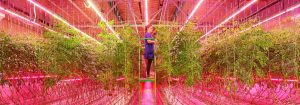Be the first! Get the latest news and updates - Subscribe to our newsletter!
Grow your business with Philips LED grow lights
Natural light often falls short on giving crops what they need to grow and flourish. With Philips professional LED grow lights you can control many aspects of crop growth to get better business results. Whether you produce vegetables, fruits or flowers – in a greenhouse, vertical farm or other indoor facility – we offer a choice of the best LED grow lights for your specific crop. Our tried and tested horticulture LED grow lights can help you increase yields, quality and consistency of your crop.
Unlock lighting intelligence
Introducing a new era in horticultural lighting – where high-performance fixtures, intelligent controls, and advanced algorithms work together to optimize every stage of plant growth. Our integrated solution unlocks lighting intelligence that helps growers increase yields and reduce costs through optimized lighting. Gain the insight, adaptability, and efficiency you need to improve crop performance and boost profitability.

Lights
GreenPower toplighting force 2.0 controllable luminaires put you in full control of light intensity, spectrum, and power usage. With four steerable channels, you can precisely tailor lighting to meet the unique needs of your crops and your business.

Controls
Easily create and manage custom light recipes for each crop phase or variety. Our GrowWise control system simplifies recipe management and integrates seamlessly with your climate computer.

Algorithms
Enable our algorithms to unlock the full potential of intelligent lighting. These smart algorithms automatically optimize your lighting system based on real-time factors like growing conditions, energy prices, and market demand – to increase yields or reduce energy costs.
GrowWise smart spectrum
GrowWise smart spectrum automatically optimizes the spectra of your light installation based on real-time sunlight irradiation - with just a few clicks. By replacing less efficient spectra by more energy-efficient ones, smart spectrum is designed to support on energy savings or boosting crop growth while being easy to use and safe for your crops.
Energy savings: realize up to 6% reduction in energy usage for lighting while keeping your flux output constant.
Crop growth: increasing your flux up to 5% while keeping the same power input will help you to boost your crop growth.
Ease of use: a proven algorithm and just 3 clicks mean you spend less time fussing with set points and wasting time to optimize your light schedules.
Safe for your crop: smart spectrum works within proven thresholds to ensure healthy crops while getting the most out of your color-controllable luminaires.
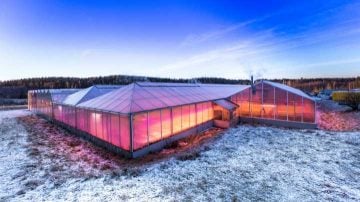
Greenhouse led grow lights
Greenhouse growers around the world use Philips indoor grow lights to improve vegetable, fruit and floriculture crops. Whether you are looking to improve propagation, growth of young plants or commercial-scale yields, Philips offers the best LED grow lights and the GrowWise Control System to improve results for any situation. Our range of horticulture LED grow lights can be used for greenhouses with standard benches, high-wire set-ups, hydroponic systems and more.
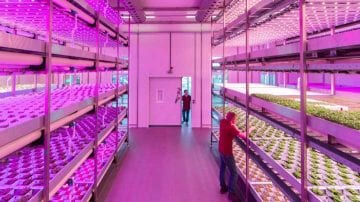
Vertical farming led grow lights
Pioneers in vertical farming are leveraging Philips innovative LED grow lights to grow a range of crops indoors in climate-controlled facilities without sunlight. These facilities are ideal for propagating young plants, cultivating leafy greens, herbs and fruits, and rapidly developing new varieties of seeds. Philips offers a range of professional LED grow lights and the GrowWise Control System to help growers achieve higher yields on a smaller footprint and steer unique properties of crops, like enhanced flavor, nutritional value and shelf life.
The latest horticulture updates
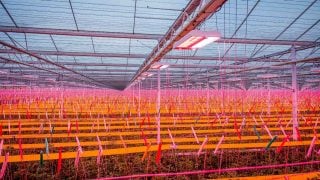
Signify helps Looye Kwekers achieve high production levels
The Honeytomatoes in the new greenhouse have thrived in the first season. Both production volumes and the flavor and fruit quality are at summer crop level.

How different growing environments can influence nitrate levels in leafy greens
Researchers grew leafy greens under LED grow lights in a vertical farm and greenhouse and were able to decrease or increase nitrate levels in the plants.
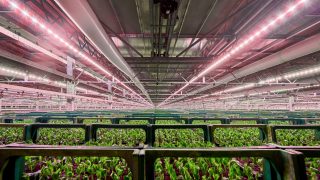
High-performance chrysanthemum cuttings with LED precision
Deliflor Hoogveld boosts cutting quality and consistency with Philips LED lighting, achieving faster growth and improved sustainability.
Products
Leverage proven results from Philips Light Recipes
Philips light recipes capture all the elements of lighting that steer plant growth. They are the result of hundreds of trials and projects between Philips Horticulture Lighting, growers and researchers to investigate how the LED grow light spectrum affects various crops and growing phases of plants. Today, we offer a wide array of LED grow light recipes, based on proven results for specific varieties, growth phases and cultivation set-ups.

Explore our horticultural segments
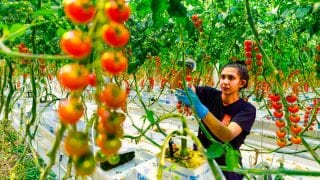
Vegetables & Fruits
High wire vegetables, leafy greens, herbs and soft fruits
Improve the quality, consistency and yield of vegetables and fruits, year-round with finely-tuned light recipes. LED grow lights supply the spectrum and intensity that crops need without adding extra heat.
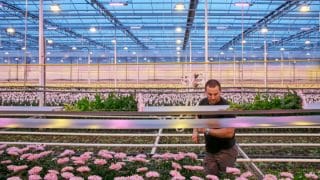
Floriculture
Cut flowers, potted plants, bedding plants & perennials
The right light recipe increases flower size, propagation success and production numbers, while shortening crop cycles. LED grow lights give you full control over your plants and indoor climate in all the growth phases.
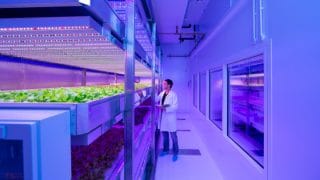
Vertical farming
Grow leafy greens, herbs and fruits without daylight
Producing profitable crops in indoor facilities. LEDs make the dream possible. They provide the optimal growth recipe to, grow healthier, pesticide-free crops, propagate young plants and maximize single or multi-layer yield indoors.
Contact us
Contact certified partners
Philips products are sold through a global network of certified partners. Find partners in your region for more information about Philips LED grow lights.
Contact Philips
What are the best LED grow lights for your situation? We are here to help. Please use our form to submit your request.
Events
Fruit Logistica
Berlin, 5-7 February
Leamington Greenhouse Grower Expo
Leamington, 12 February
HortiContact
Gorinchem, 18-20 February
Blog
Dynamic LED lighting yields significant savings
With high energy prices here to stay, we’ve seen big changes in the way growers are thinking about their use of light.

